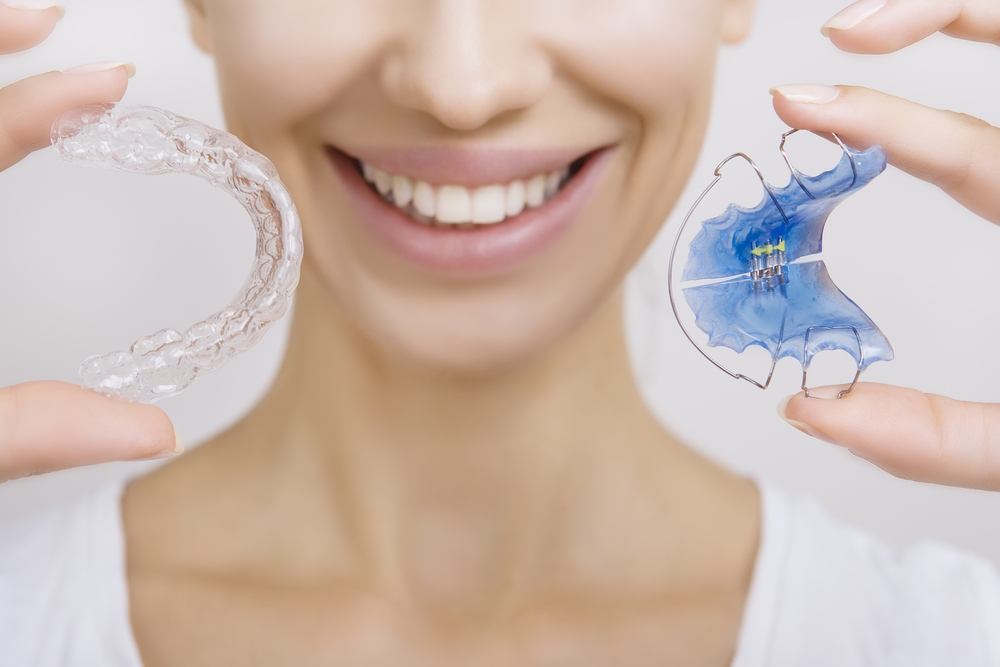Malocclusion, or misaligned teeth, is not a fun condition to have, and something no parent would wish on their child. That’s why most parents opt for early orthodontic treatment when it comes to handling their kid’s crooked teeth. Growing into adolescence with malocclusion is especially difficult, and something to best be avoided. An added advantage of nipping it in the bud during childhood is that you don’t have to worry as much about how they will feel about their appearance, which frees you up to use metal braces. Metal braces are advantageous in a number of ways, including being cheap, effective, and widely applicable to all kinds of malocclusions. Although the advantages of metal braces are many, the one big drawback is that they are visually striking, and to most people, very ugly. That doesn’t matter so much for most kids, so this is why metal braces are usually used on children, primarily.
However, some children are different. Not all kids are okay with getting the normal sort of wire braces that kids usually get. While it’s true they are the best option, and it’s less weird for a kid to wear them than it is for an adult, still, some kids are just more self-conscious. Who can say exactly why? Each child has their own personality, and for the most part, it just is what it is. So, if you have the type of kid that you think would be averse to wearing metal braces, you may be asking yourself, what are my other options? Actually, there are several, and being aware of them can help make it easier to get your kid feeling confident that there is a solution that will work for them. more non this website
There are more than one incognito braces solution offered by orthodontists, and while they are usually geared towards adults and teens, most of them can also be used on children’s teeth, as well. There are a few options in this department, but by far the most popular smile solution for adults and teens, that can also be used on children, is called Invisalign.
Invisalign is actually a totally new approach to malocclusion, that doesn’t involve braces at all, at least not in the traditional sense. Instead of adhering to the surfaces of teeth and pulling them together or apart with wires, Invisalign uses something called aligners. Aligners are like transparent plastic gloves for teeth, they are made to perfectly envelop the teeth, and so are much less visible than any other type of braces. They look more or less like a layer of laminated coating over your teeth, but only if you look very closely; from normal, conversational distances, they are basically invisible. These clear plastic aligners shift your teeth into a better position by being made just off-alignment with your teeth’ current position, that they pressure your teeth to move into the proper position. Aligners are custom printed by your orthodontist, using a machine and some software, based on scans of your teeth.
Invisalign is a relatively high-tech treatment that works quite well with virtually all forms of malocclusion. Additionally, it is roughly equivalent in effectiveness to most other braces types and is completely invisible. As an added perk, aligners are removable, so you can avoid the issue of food getting stuck in them, as some foods like bananas and avocados have a tendency of doing, with wire braces. With Invisalign, you just take them out any time you want to eat, or brush your teeth, and leave them in the rest of the time, to keep working their magic. The combination of convenience, versatility, and invisibility has made Invisalign extremely popular among adults, and if you have a highly self-conscious kid that doesn’t want to wear metal braces, Invisalign for kids could be your best bet.
Still, it doesn’t hurt to check out your options. There are other types of less visible braces that might be better for your situation. Clear and ceramic braces are made from materials that blend in more easily with your teeth, and so maintain the effectiveness of metal braces, while being less visually striking, although they are still noticeable. Lingual braces go behind the teeth, rather than on the fronts of them, but they also are limited in applicability, and usually, children’s teeth are too small for them.
Modern orthodontics offers a number of solutions for anyone’s needs, so more than anything, your kid should know that they have choices and that they will be able to find something that suits their needs and desires. If you have a situation like this, don’t hesitate to speak with your orthodontist about Invisalign for kids, and other similar options, when you go in for a consultation.






